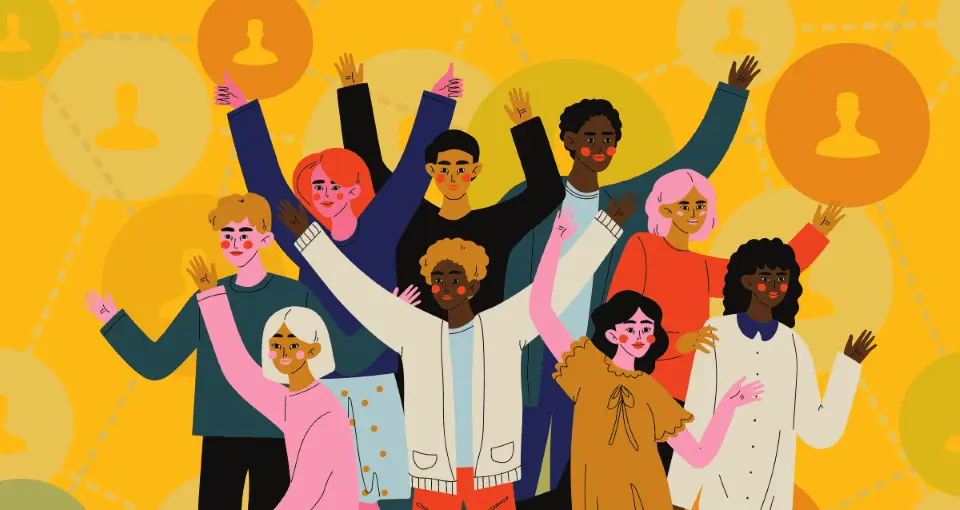Building a workplace where everyone feels valued, and heard, is not only the right thing to do, but also makes sound business sense. It has been proven that diverse teams solve problems and create better solutions. And by supporting underrepresented populations, companies draw from a vast array of talent and viewpoints.
Empirical evidence has long established that strong diversity and inclusion practices correlate with more engaged employees and greater productivity — and consequently stronger financial performance — for the organizations that adopt them. Little things like mentorship programs, leadership training initiatives, and inclusive decision-making practices can go a long way toward empowering those employees who are typically underrepresented.
This guide outlines concrete actions organizations can take to support and elevate their diverse workforce. These strategies foster an atmosphere within the organization that allows every employee to succeed and bring their distinct talent and perspective to the table. The outcome is a workplace that is more robust and vibrant in a way that benefits everyone.
Creating an Inclusive Culture
A welcoming workplace culture gives everyone a voice and equal chance to succeed. Organizations need to take active steps to build environments where all employees feel valued and supported.
Promoting Equity and Equal Opportunities
Fair and equitable hiring practices make for diverse teams. Organizations should revise job descriptions to eliminate biased language; expand recruiting channels to minorities and others who’ve historically been underrepresented; identify candidates from lesser-known colleges; and look closely at research on how performance evaluations, promotions, and recruitment efforts can tend to be biased against women and people of color.
Having transparent promotion criteria and advancement paths means all employees have equal shots at expansion. Conduct regular pay equity assessments to identify and address pay gaps.

Employee Resource Groups (ERGs) offer great networking and mentorship. These groups help connect employees with shared backgrounds and bring their voices to leadership. Building Awareness and Training
Regular unconscious bias training helps teams recognize and address hidden prejudices. Interactive workshops work better than passive learning.
Cultural competence education teaches employees to work effectively across differences. This includes understanding various communication styles and cultural perspectives.
Leaders need specific training on inclusive management practices. They should learn to facilitate inclusive meetings and give feedback fairly to all team members.
Fostering Belonging and Community
Inclusive language guidelines help create respectful communication. Teams should avoid idioms or references that exclude certain groups.
Regular team-building activities bring people together across departments and backgrounds. These should accommodate different schedules and accessibility needs.
Mentorship programs connect employees with experienced guides who understand their experiences. This creates support networks and helps with career development.
Safe spaces for open dialogue let employees share concerns and ideas. Regular check-ins and anonymous feedback channels give everyone a voice.
Growth and Leadership
Providing opportunities for meaningful growth and leadership creates a fairer workplace where all employees can succeed and utilize their unique skillsets.
Enabling Mentorship and Professional Development
The best mentorship programs ensure that underrepresented employees are paired with seasoned leaders who can provide them with insight and direction. Mentees build skills and enhance their networks through these relationships.
Organizations should provide structured mentoring with specific goals and regular check-ins. It brings accountability and makes sure mentors as well as mentees are getting something out of the relationship.
There are also opportunities for the company to offer professional development, such as workshops, conferences, and training programs that can help employees create useful skills. Enabling these to be accessible to everyone on the staff creates avenues for career growth.
Encouraging Inclusive Leadership
Leaders must actively seek out and welcome diverse perspectives in meetings and projects. This means creating an environment where everyone feels comfortable speaking up.
Training programs can help managers recognize and overcome unconscious bias. These programs should focus on practical skills like inclusive communication and fair evaluation of talent.
Employee resource groups give underrepresented staff members spaces to connect and support each other. Leadership should provide resources and visibility to these important networks.
Enhancing Decision Making
Bringing diversity to the table for key decisions leads to better results and more creative solutions. Organizations should monitor their level of representation at every level and establish clear targets for improvement.”
Establishing clear pathways to leadership roles allows talented employees to advance. This includes early identification of high-potential staff and offering them leadership development opportunities.
Diverse hiring panels and promotion committees help mitigate bias in critical personnel actions. We regularly review these processes to help ensure they are fair and effective.


